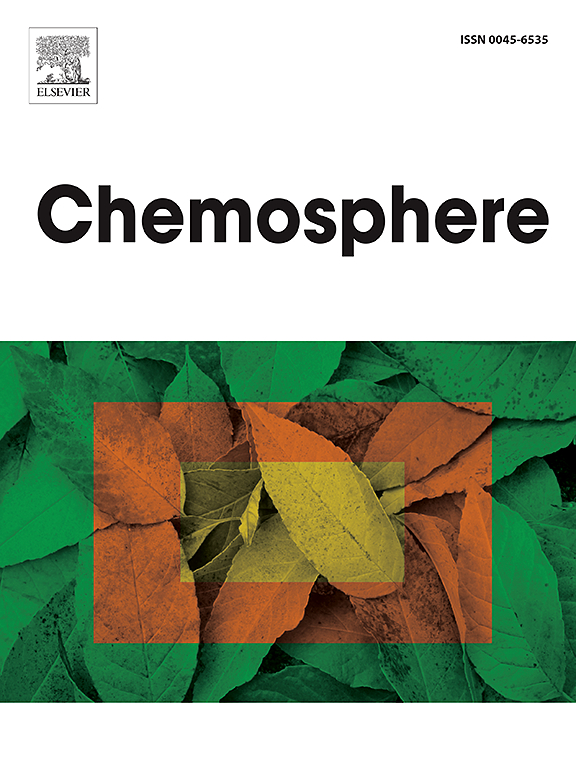Bacteriophages carry auxiliary metabolic genes related to energy, sulfur and phosphorus metabolism during a harmful algal bloom in a freshwater lake
IF 8.1
2区 环境科学与生态学
Q1 ENVIRONMENTAL SCIENCES
引用次数: 0
Abstract
Cyanophages play an important role in nutrient cycling in lakes since they can modulate the metabolism of cyanobacteria. A proper understanding of the impact of cyanophage infection on the metabolism and ecology of cyanobacteria is critical during a complete cycle of harmful algal bloom (HAB). The ecology of cyanophages in marine environments has been well-delineated, but cyanophages in freshwater lakes remain less studied. Here, we studied the diversity of cyanophages and their impact on host ecology and metabolism through the succession of HAB in Utah Lake, which is a shallow eutrophic freshwater lake, in 2019. We collected water samples at three different periods from two locations in freshwater Utah Lake. The three sampling periods represented the pre-bloom, peak-bloom, and post-bloom events. We observed that the Utah Lake virome was dominated by families Myoviridae, Siphoviridae, and Podoviridae under the order Caudovirales. We detected photosystem-related genes, sulfur assimilation genes, and pho regulon (phosphorus metabolism) genes in genomes of predicted cyanophages. We were able to capture the changes in relative abundance and expression of functional genes in genomes of cyanophage at different stages of the bloom. We observed higher relative abundance and expression of cyanophage-encoded pho-regulon genes in the “pre-bloom” period. The higher expression of pho-regulon genes in P-limited ecosystem of Utah Lake indicated the possible contribution of cyanophage to enhance the fitness of the host cyanobacteria. Our study provides some insightful findings on the role of cyanophages in controlling the ecology and relative abundance of host cyanobacteria in freshwater lakes.

在淡水湖的有害藻华中,噬菌体携带与能量、硫和磷代谢相关的辅助代谢基因。
噬藻体可以调节蓝藻的代谢,在湖泊营养循环中起着重要作用。在一个完整的有害藻华(HAB)周期中,正确理解噬藻感染对蓝藻代谢和生态的影响是至关重要的。海洋环境中噬藻体的生态学已经很好地描述了,但淡水湖泊中的噬藻体研究仍然较少。本文通过2019年浅富营养化淡水湖犹他湖赤潮的演替,研究了噬藻体的多样性及其对宿主生态和代谢的影响。我们在犹他淡水湖的两个地点采集了三个不同时期的水样。三个采样周期分别代表了开花前、开花高峰和开花后的事件。我们观察到犹他湖病毒组主要由尾状病毒目肌病毒科、虹膜病毒科和足状病毒科组成。我们在预测的噬藻体基因组中检测了光系统相关基因、硫同化基因和磷调节基因。我们能够捕捉到在藻华的不同阶段,噬藻体基因组中相对丰度和功能基因表达的变化。我们观察到在“开花前”时期,噬藻体编码的磷调控基因的相对丰度和表达量较高。在犹他湖磷限制生态系统中,高磷调控基因的表达表明,噬藻体可能对增强宿主蓝藻的适应度有贡献。我们的研究为蓝藻在控制淡水湖生态和宿主蓝藻相对丰度中的作用提供了一些有见解的发现。
本文章由计算机程序翻译,如有差异,请以英文原文为准。
求助全文
约1分钟内获得全文
求助全文
来源期刊

Chemosphere
环境科学-环境科学
CiteScore
15.80
自引率
8.00%
发文量
4975
审稿时长
3.4 months
期刊介绍:
Chemosphere, being an international multidisciplinary journal, is dedicated to publishing original communications and review articles on chemicals in the environment. The scope covers a wide range of topics, including the identification, quantification, behavior, fate, toxicology, treatment, and remediation of chemicals in the bio-, hydro-, litho-, and atmosphere, ensuring the broad dissemination of research in this field.
 求助内容:
求助内容: 应助结果提醒方式:
应助结果提醒方式:


